|
|
Post by tony on May 7, 2024 12:10:29 GMT -8
Are there any known issues with these models to be aware of before purchasing?
|
|
|
|
Post by hudsonyard on May 7, 2024 19:07:45 GMT -8
these have the goofy end brackets on the roofwalk that the GN 12 panel cars had, once you notice it it sticks out.
|
|
|
|
Post by bn7023 on May 7, 2024 21:41:27 GMT -8
When I try to access Rapidotrains.com, I get blocked. The site says "You can email the site owner," but I can't seem to figure out the email address. Does anyone know?  |
|
|
|
Post by cpr4200 on May 8, 2024 0:08:51 GMT -8
Try trains@rapidotrains.com
|
|
|
|
Post by nstophat on May 8, 2024 4:50:50 GMT -8
|
|
|
|
Post by bn7023 on May 9, 2024 6:39:41 GMT -8
Thank you for all the advice. It's been over 24 hours since I sent them an email, but they haven't responded and my access to their website remains inaccessible. 639By the way, what is the symbol mark shown at the head end of the subject of this thread? 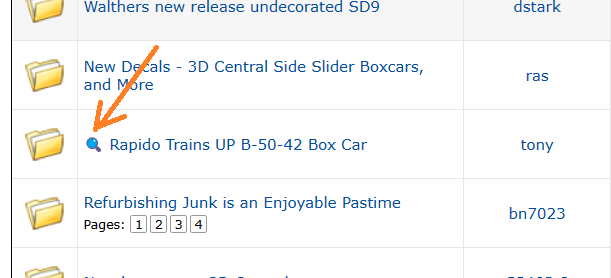 |
|
|
|
Post by jonklein611 on May 9, 2024 8:05:34 GMT -8
Rapido's website was having issues the past few days. Try refreshing or removing cookies for the page.
|
|
|
|
Post by bn7023 on May 9, 2024 18:01:10 GMT -8
I took the trouble to ask for your advice, but it didn't work out. I can see the information on Facebook and this forum, so I give up on accessing the website.
|
|
|
|
Post by heymccall on May 11, 2024 20:51:01 GMT -8
Rapidotrains.com works for me.
|
|
mdq
Full Member
  
Posts: 131
|
Post by mdq on May 12, 2024 12:06:02 GMT -8
Site is working for me... (I have no experience or knowledge about that boxcar  ) rapidotrains.com/ho-scale/freight-car/up-40-acr-boxcar.htmlrapidotrains.com/catalogsearch/result/?q=B-50-42“Alternating Center Rivet” (or “ACR”). Fans of freight cars have used these terms to describe boxcars built with a unique side construction. Because these cars were built using thinner side sheeting to save unladen weight, they required additional support posts behind the sides requiring an additional row of rivets down the middle of each side panel. These added vertical rows of rivets were generally spaced twice as far as the rivets along the panel edges, giving an alternating pattern and a unique appearance. The railroad which had the most boxcars built with lightweight “ACR” construction was the Union Pacific. In the years just before and immediately following World War II the UP built numerous classes of forty- and fifty-foot boxcars using this lightweight design. The postwar cars make up a particularly interesting group for historians and modelers. They span a period when standard boxcar ends and roofs were undergoing design changes, as were the UP’s paint and lettering practices, creating interesting variations from one group to the next. Rapido Trains is proud to release a series of these postwar Union Pacific “ACR” 40’ boxcars in classes B-50-39, -41 and -42. Featuring all-new tooling developed with the aid of UP freight car experts, this is the first time that these important classes have been available in HO plastic. Each group of cars offers unique components and/or lettering that showcases the changes that occurred on the prototypes over just a few years. We have designed two styles of roof, two styles of end, four styles of brake wheel (with the correct corresponding housings).  The Rapido Trains HO scale UP 40' ACR boxcar features: Designed from original blueprints Early or late improved dreadnought ends (depending on class) Straight or diagonal panel roof (depending on class) Correct handbrake styles and housings ASF Ride Control or Barber S-2 cast steel trucks Full underbody detailing Correct brake platforms and running boards Semi-scale couplers and coupler boxes Free-rolling turned metal wheels Accurate paint and lettering Multiple road numbers available per scheme. 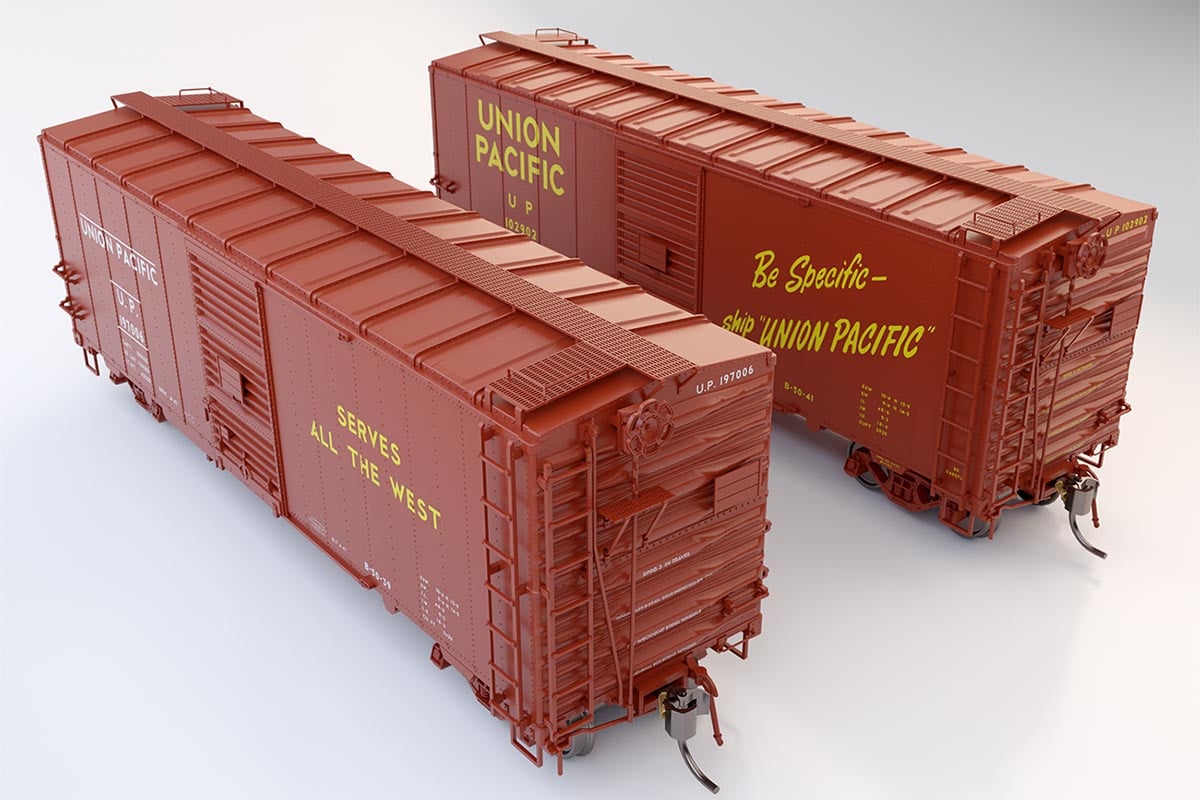  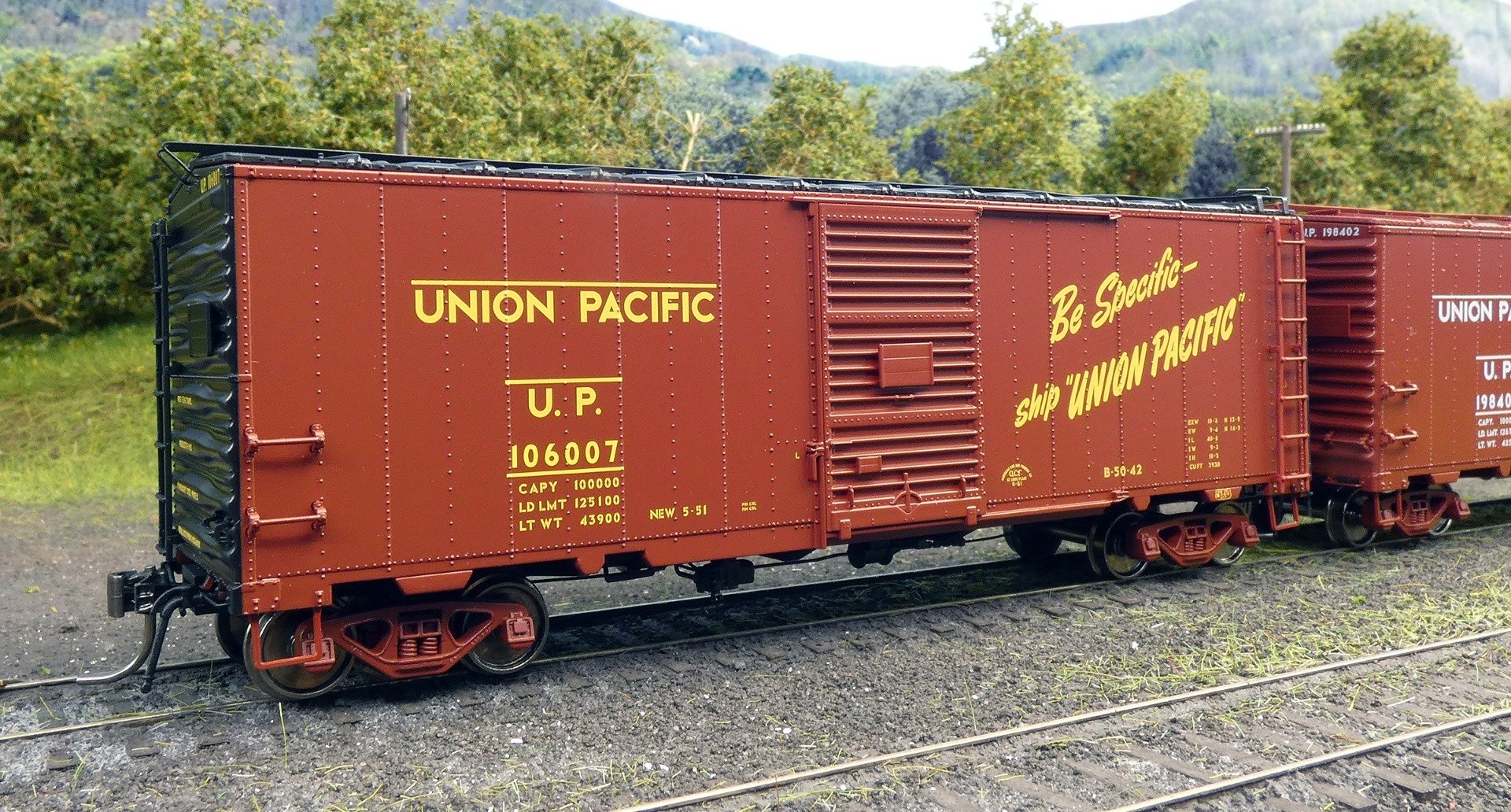 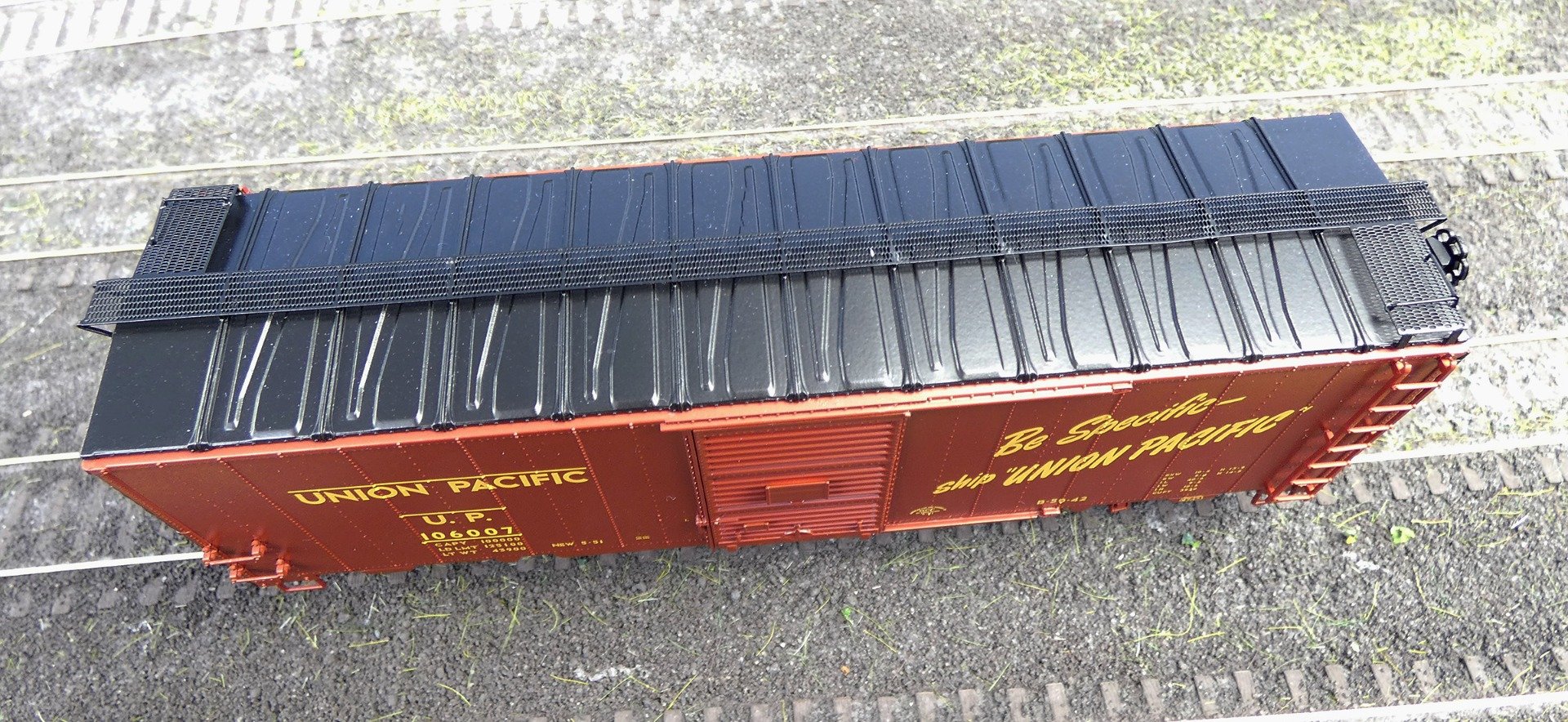  |
|
|
|
Post by cpr4200 on May 12, 2024 16:11:54 GMT -8
Trix/Marklin also did an ACR boxcar, not sure what class. Not too hard to find on the secondary market, they go for about $30.
|
|
|
|
Post by lyndenbranch on May 12, 2024 16:39:24 GMT -8
Trix/Marklin also did an ACR boxcar, not sure what class. Not too hard to find on the secondary market, they go for about $30. I have nine of these, if you're interested in any of them. They're good fodder for the sides and ends; The roofs don't have raised panels, but those can be added from another kit if you have spare roofs. The underframes are sorta wonky, if you look at them while you operate; those also can be easily swapped out for an Accurail underframe. |
|
|
|
Post by cpr4200 on May 12, 2024 16:50:16 GMT -8
I have a Trix 40' auto car coming. It appears to have a Murphy overhanging roof (single raised section as opposed to the diagonal panel roof) with 4/4 Dreadnaught ends and 10-6 inside height. Might leave it stock, or might backdate to the 471000 series rebuilt from a wood sheathed car with widened and heightened USRA-style Murphy ends and steel sides.
|
|
|
|
Post by trainguy99 on May 12, 2024 17:06:30 GMT -8
Trix/Marklin also did an ACR boxcar, not sure what class. Not too hard to find on the secondary market, they go for about $30. I have nine of these, if you're interested in any of them. They're good fodder for the sides and ends; The roofs don't have raised panels, but those can be added from another kit if you have spare roofs. The underframes are sorta wonky, if you look at them while you operate; those also can be easily swapped out for an Accurail underframe. A frame swap is the ticket on the Trix cars. There are simply too many pivots. With the stock drawbars and knuckle couplers, the cars work reasonably well if you’re pulling them but not when you push them. |
|
|
|
Post by bn7023 on May 12, 2024 22:30:24 GMT -8
 MR magazine Jan. 2005 issue Crick here to enlarge 1488 MR magazine Jan. 2005 issue Crick here to enlarge 1488Trix/Marklin's 1937 AAR single-door boxcar is UP B-50-24, and the double-door is automobile car UP A-40-16. 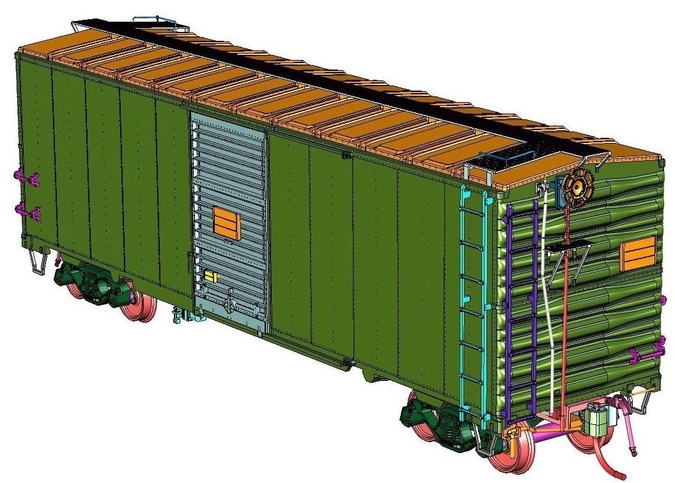 The problem is that Rapido Trains ( quote this image) claims that the ACR structure is for weight reduction. See my post on the MR forum. It is true that UP cars are 2 or 4 tons lighter than SP and NP cars. However, try reducing the thickness of the side panels by one rank and calculating the weight. Changing from 2.3mm to 1.6mm will reduce the weight by at most 0.5 tons. If UP itself said that its purpose was to reduce weight, that is true. However, if a fan said this, it would be frowned upon. If it were possible to reduce the weight of a 40-ft car by 2 tons, it would have been a revolutionary technology. UP should have advertised it extensively, and other railroads should have followed suit. Historically, there have been no such things, so we must be suspicious. I think that the purpose of ACR structures was for bulk grain transportation and increasing the strength of the side panels. |
|
|
|
Post by packer on May 13, 2024 5:53:14 GMT -8
I have nine of these, if you're interested in any of them. They're good fodder for the sides and ends; The roofs don't have raised panels, but those can be added from another kit if you have spare roofs. The underframes are sorta wonky, if you look at them while you operate; those also can be easily swapped out for an Accurail underframe. A frame swap is the ticket on the Trix cars. There are simply too many pivots. With the stock drawbars and knuckle couplers, the cars work reasonably well if you’re pulling them but not when you push them. I have one for use with my steam stuff. I just drilled/tapped for a 2/56 screw and body mounted couplers. I don't recall if I had to add weight or not. |
|
|
|
Post by talltim on May 13, 2024 8:19:30 GMT -8
The problem is that Rapido Trains ( quote this image) claims that the ACR structure is for weight reduction. See my post on the MR forum. It is true that UP cars are 2 or 4 tons lighter than SP and NP cars. However, try reducing the thickness of the side panels by one rank and calculating the weight. Changing from 2.3mm to 1.6mm will reduce the weight by at most 0.5 tons. If UP itself said that its purpose was to reduce weight, that is true. However, if a fan said this, it would be frowned upon. If it were possible to reduce the weight of a 40-ft car by 2 tons, it would have been a revolutionary technology. UP should have advertised it extensively, and other railroads should have followed suit. Historically, there have been no such things, so we must be suspicious. I think that the purpose of ACR structures was for bulk grain transportation and increasing the strength of the side panels. When I read that description I thought that surely the weight of the extra vertical ribs (and the rivets) would surely offset mostif not all the weight saving from thinner side panels |
|
|
|
Post by edwardsutorik on May 13, 2024 15:44:11 GMT -8
 MR magazine Jan. 2005 issue Crick here to enlarge 1488 MR magazine Jan. 2005 issue Crick here to enlarge 1488Trix/Marklin's 1937 AAR single-door boxcar is UP B-50-24, and the double-door is automobile car UP A-40-16.  The problem is that Rapido Trains ( quote this image) claims that the ACR structure is for weight reduction. See my post on the MR forum. It is true that UP cars are 2 or 4 tons lighter than SP and NP cars. However, try reducing the thickness of the side panels by one rank and calculating the weight. Changing from 2.3mm to 1.6mm will reduce the weight by at most 0.5 tons. If UP itself said that its purpose was to reduce weight, that is true. However, if a fan said this, it would be frowned upon. If it were possible to reduce the weight of a 40-ft car by 2 tons, it would have been a revolutionary technology. UP should have advertised it extensively, and other railroads should have followed suit. Historically, there have been no such things, so we must be suspicious. I think that the purpose of ACR structures was for bulk grain transportation and increasing the strength of the side panels. "Railway Prototype Cyclopedia 31-32" is a 265 page book containing "Lightweight House Cars, Part 2". And nothing else. There are Union Pacific cars therein. With ACR. There is also Terry Metcalfe's "Union Pacific Freight Cars 1936-51", which discusses UP lightweight cars. I am quite sure the ACR is an element of UP's approach to lightweight construction. Ed |
|
|
|
Post by bn7023 on May 14, 2024 2:49:46 GMT -8
The car body design of this era adopted stressed skin structure. The side sheets were also designed to bear vertical loads. Then, there should be a post inside the rivet row, right? What forces do these posts bear? That's the answer. If the experts didn't declare that the purpose was to reduce weight, that would be incorrect. 1841
|
|
|
|
Post by edwardsutorik on May 14, 2024 4:52:36 GMT -8
|
|
|
|
Post by Colin 't Hart on May 14, 2024 20:03:52 GMT -8
these have the goofy end brackets on the roofwalk that the GN 12 panel cars had, once you notice it it sticks out. Yes, the end brackets just sort of fold over rather than butting up underneath. Also the running board laterals have supports at the side of the boxcar that are WAY too tall. Both of these mean the roof part of the car just looks weird. And that's the part you notice the most... The GN boxcars had the exact same problem, yes. I skipped on both. I didn't end up looking further but apparently there are more problems with them too if you're well versed in boxcars. The thing is most modellers don't know nearly enough and we expect the manufacturers to know and to get it right for us. Turns out some of them know as little as most of us. |
|
|
|
Post by bn7023 on Jul 29, 2024 20:46:27 GMT -8
When I try to access rapidotrains.com, I get blocked. The site says "You can email the site owner," but I can't seem to figure out the email address. Does anyone know? I was able to access rapidotrains.com today. Thanks all. |
|
|
|
Post by prr 4467 on Jul 30, 2024 8:35:23 GMT -8
these have the goofy end brackets on the roofwalk that the GN 12 panel cars had, once you notice it it sticks out. Yes, the end brackets just sort of fold over rather than butting up underneath. Also the running board laterals have supports at the side of the boxcar that are WAY too tall. Both of these mean the roof part of the car just looks weird. And that's the part you notice the most... The GN boxcars had the exact same problem, yes. I skipped on both. I didn't end up looking further but apparently there are more problems with them too if you're well versed in boxcars. The thing is most modellers don't know nearly enough and we expect the manufacturers to know and to get it right for us. Turns out some of them know as little as most of us. Sadly, I think this is all too true. I'm very glad for some that you are happy with your new Rapido products. For me, some of the things they did in the past were just unforgivable, specifically including their attitude toward myself and others when a serious problem was brought to their attention. I seriously tried the nice approach. I am now much more discerning regarding which new products I buy, and I now expect metal stirrup steps on new freight cars, or I will simply not buy them at all. It's too easy to find Tangent or Moloco freight cars that have the more durable metal stirrup steps. Not every car does for Tangent, due to how the prototype appeared (some things are difficult to render with metal wire), but many of their freight cars actually do have the metal stirrup steps. The others I can mostly live without. Ymmv. John P.S. I want to like the UP box car above, but some of the parts just look too clunky to me. |
|